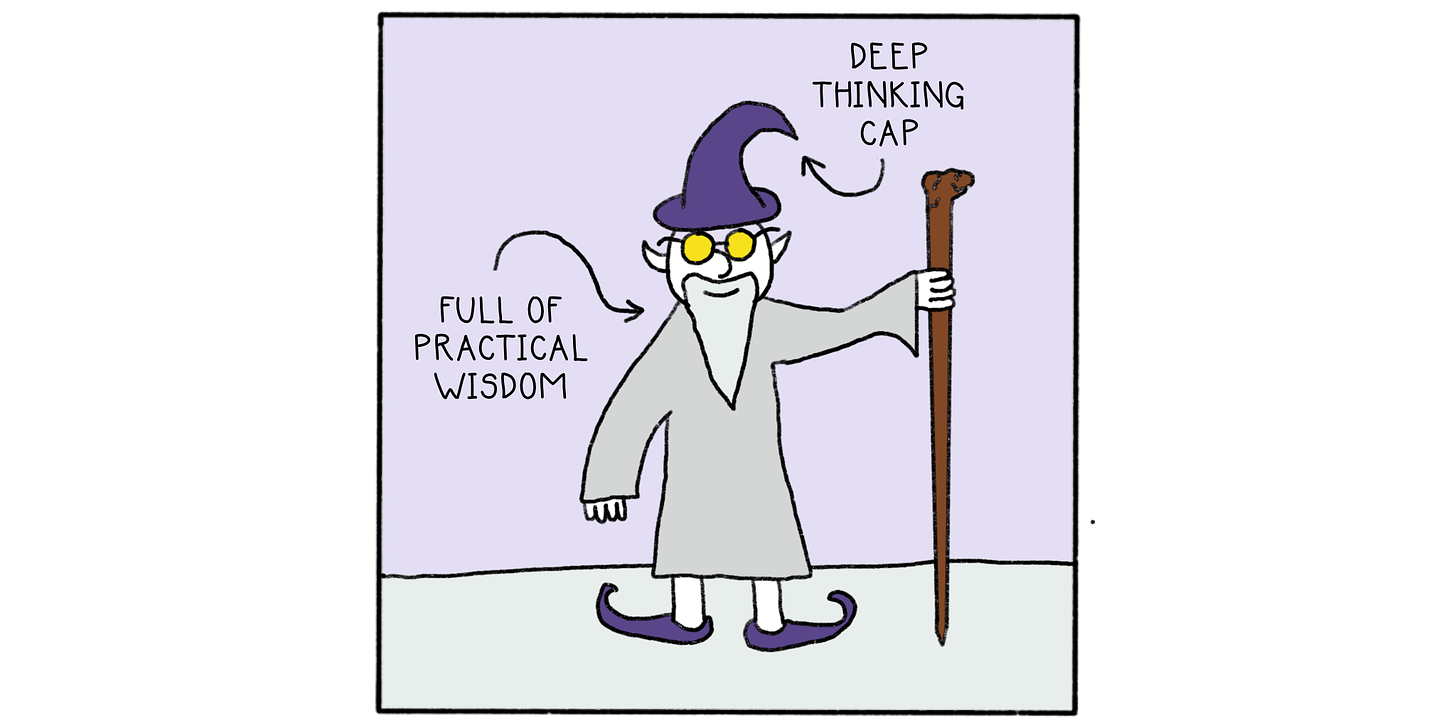15 March 2023
A Party of One
I never played Dungeons & Dragons, but I was always fascinated by the character classes. Like the fellowship in The Lord of the Rings or the squad in The Bad Batch, a core component of D&D is a balanced group of characters whose strengths offset each other’s weaknesses. The classic party includes someone that heals, someone with stealth, someone that fights, and someone who uses magic. A myriad of different classes exists, but these four are foundational.
I believe a similar set of character classes exist in knowledge work. Understanding these four skill sets can help us understand our strengths and weaknesses in the often opaque definition of our roles. These character classes are not substitutes for job titles or levels—for they could appear in any function or grade—instead, these characters are a way of understanding our purpose on a team.
While most of my experience is in the tech sector in a product manager role, I hope these experiences can transcend the specifics and serve as a general framework for understanding our purpose in any team. Over the last eight years, I’ve had the opportunity to work as a Cleric, Ranger, Warrior, and Mage, and here are a few things I’ve learned.
The Cleric
When I left college, I was a nice idiot. Sure, a paper said I knew things, but all I really had was a can-do attitude and a decent work ethic. General Electric took a chance and hired me into their “leadership program” to move around the company every six months for two years. I didn’t know anything about gas engines or wind turbines and—admittedly—not that much about the software I was supposed to manage.
Even though I had minimal hard skills, I was a collaborative millennial who was easy to work with and good at building relationships with many people—from leaders to peers to PhDs to wind farm technicians. I didn’t know anything, but people didn’t mind helping me because I wasn’t arrogant. I was a Cleric.

Good Clerics are friendly, patient, and humble enough to learn from more experienced and specialized team members. They add value by taking on tasks that would otherwise distract the team and streamline processes that enable collaborative work.
Bad Clerics are “overheard” when they’re impatient or arrogant because they forget their primary job is to support the team.
The Ranger
After a few years at GE, I was decent at planning since I could decompose problems into smaller parts without losing sight of the bigger picture. I got better at tracking metrics and planning projects in complex domains, such as high-performance computing. In short, I became a Ranger.

Good Rangers don’t perch on the edge of a cliff, surveying a space—they get in the weeds and track prints. They are comfortable diving into the details and emerging to inform their long-term plan.
Bad Rangers hover on the surface and are too timid to descend into low-level messages. When I set my sights on new pastures and landed at Ekata, I was responsible for a massive identity data asset. In that role, I learned the hard way—through several buggy releases—that drilling into the details was fundamental to building an informed perspective.
The Warrior
One day, I found myself in the depths of Amazon—serving as a PM on a core services team. It was the height of the COVID lockdown, and my team cycled through a carousel of leaders as we struggled to scale with the company’s aggressive growth. Amazon has a heavy self-service culture, so one must be a competent, fast learner and comfortable doing independent work to succeed. It was an opportunity to roll up my sleeves and hack through the jungle.

Good Warriors are calm and competent. They’re great at execution and have high say-do ratios. Without them, no real work can happen.
Bad Warriors are trigger-happy and overreactive. They act without fully understanding a problem and immediately start solutioning—which can waste resources and create new problems.
The Mage
Two years ago, I returned to Ekata to work on data science products. I had some familiarity with machine learning, but I was by no means an expert, and the complexity of the domain soon caught up to me. Although I had a strong foundation for doing, planning, and collaborating, I lacked proficient thinking skills to be effective. The complexity of the space felt like magic, and I was merely an enthralled audience member—unaware of how my mystical coworkers conjured such spectacles. But through independent reading, dumb questions, and trial & error, I learned to strengthen my thinking.

Good Mages draw from a latticework of mental models to appropriately shape their thinking to the circumstance. They develop the practical wisdom to know when to question, reframe, or slow down.
Bad Mages are overly critical and misuse their powers to turn down solutions without proposing new ones. They might dwell on problems endlessly or talk about ideas but never execute them.
A Balanced Party
No party is complete without these four classes. The Cleric collaborates, the Ranger meticulously plans, the Warrior reliably executes, and the Mage thinks deeply.
If one role is missing, the group is unbalanced.
- No Cleric → toxic environment and low trust
- No Ranger → stressful and randomized days
- No Warrior → no execution or progress
- No Mage → solving the wrong problem
Multiple people might fill one role (i.e., three people are Warriors), or one person might fill numerous positions (i.e., someone is both the Cleric and the Ranger), but every team needs the four characters.
In A Company of One, Paul Jarvis describes a model for solopreneurship that involves developing a broad skillset. While most of us won’t become solopreneurs, balanced skills can make us more effective at anything we set our minds to. If we’re a little skilled in each class, we can fill the gaps in whatever team we’re on—even a party of one.